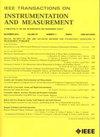Image Reconstruction With B₀ Inhomogeneity Using a Deep Unrolled Network on an Open-Bore MRI-Linac
IF 5.9
2区 工程技术
Q1 ENGINEERING, ELECTRICAL & ELECTRONIC
IEEE Transactions on Instrumentation and Measurement
Pub Date : 2024-10-16
DOI:10.1109/TIM.2024.3481545
引用次数: 0
Abstract
MRI-Linac systems require fast image reconstruction with high geometric fidelity to localize and track tumors for radiotherapy treatments. However, B0 field inhomogeneity distortions and slow MR acquisition potentially limit the quality of the image guidance and tumor treatments. In this study, we develop an interpretable unrolled network, referred to as RebinNet, to reconstruct distortion-free images from B0 inhomogeneity-corrupted k-space for fast MRI-guided radiotherapy (MRgRT) applications. RebinNet includes convolutional neural network (CNN) blocks to perform image regularizations and nonuniform fast Fourier transform (NUFFT) modules to incorporate B0 inhomogeneity information. The RebinNet was trained on a publicly available MR dataset (3300 images) from eleven healthy volunteers for both fully sampled and subsampled acquisitions. About 768 grid phantom and 12 human brain images acquired from an open-bore 1 T MRI-Linac scanner were used to evaluate the performance of the proposed network. The RebinNet was compared with the conventional regularization algorithm and our recently developed UnUNet method in terms of root-mean-squared error (RMSE), structural similarity (SSIM), residual distortions, and computation time. Imaging results demonstrated that the RebinNet reconstructed images with the lowest RMSE (<0.05)>0.92) at four-time acceleration for simulated brain images. The RebinNet preserved more image details and substantially increased the computational efficiency (3 s, ten-fold faster) compared to the conventional regularization methods (30 s), and had better generalization ability than the UnUNet method. The proposed RebinNet can achieve rapid image reconstruction and overcome the B0 inhomogeneity distortions simultaneously, which would facilitate accurate and fast image guidance in radiotherapy treatments.在开孔核磁共振成像成像仪上使用深度非卷积网络进行 B₀ 非均质性图像重建
MRI-Linac 系统需要具有高几何保真度的快速图像重建,以便定位和跟踪肿瘤,进行放射治疗。然而,B0 场不均匀性失真和缓慢的 MR 采集可能会限制图像引导和肿瘤治疗的质量。在这项研究中,我们开发了一种可解释的非卷积网络(称为 RebinNet),用于从 B0 不均匀性破坏的 k 空间重建无失真图像,以实现快速 MRI 引导放射治疗(MRgRT)应用。RebinNet 包括用于执行图像正则化的卷积神经网络 (CNN) 模块和用于纳入 B0 不均匀性信息的非均匀快速傅立叶变换 (NUFFT) 模块。RebinNet 在一个公开的磁共振数据集(3300 张图像)上进行了训练,该数据集来自 11 名健康志愿者的全采样和子采样采集。从开孔 1 T MRI-Linac 扫描仪上获取的约 768 幅网格模型和 12 幅人脑图像被用于评估拟议网络的性能。在均方根误差(RMSE)、结构相似性(SSIM)、残余失真和计算时间方面,RebinNet 与传统的正则化算法和我们最近开发的 UnUNet 方法进行了比较。成像结果表明,RebinNet 以最低的 RMSE(0.92)重建了四倍加速的模拟脑图像。与传统的正则化方法(30 秒)相比,RebinNet 保留了更多的图像细节,大大提高了计算效率(3 秒,快十倍),并且比 UnUNet 方法具有更好的泛化能力。所提出的 RebinNet 可实现快速图像重建,同时克服 B0 不均匀性失真,有助于在放疗中准确、快速地引导图像。
本文章由计算机程序翻译,如有差异,请以英文原文为准。
求助全文
约1分钟内获得全文
求助全文
来源期刊

IEEE Transactions on Instrumentation and Measurement
工程技术-工程:电子与电气
CiteScore
9.00
自引率
23.20%
发文量
1294
审稿时长
3.9 months
期刊介绍:
Papers are sought that address innovative solutions to the development and use of electrical and electronic instruments and equipment to measure, monitor and/or record physical phenomena for the purpose of advancing measurement science, methods, functionality and applications. The scope of these papers may encompass: (1) theory, methodology, and practice of measurement; (2) design, development and evaluation of instrumentation and measurement systems and components used in generating, acquiring, conditioning and processing signals; (3) analysis, representation, display, and preservation of the information obtained from a set of measurements; and (4) scientific and technical support to establishment and maintenance of technical standards in the field of Instrumentation and Measurement.
 求助内容:
求助内容: 应助结果提醒方式:
应助结果提醒方式:


